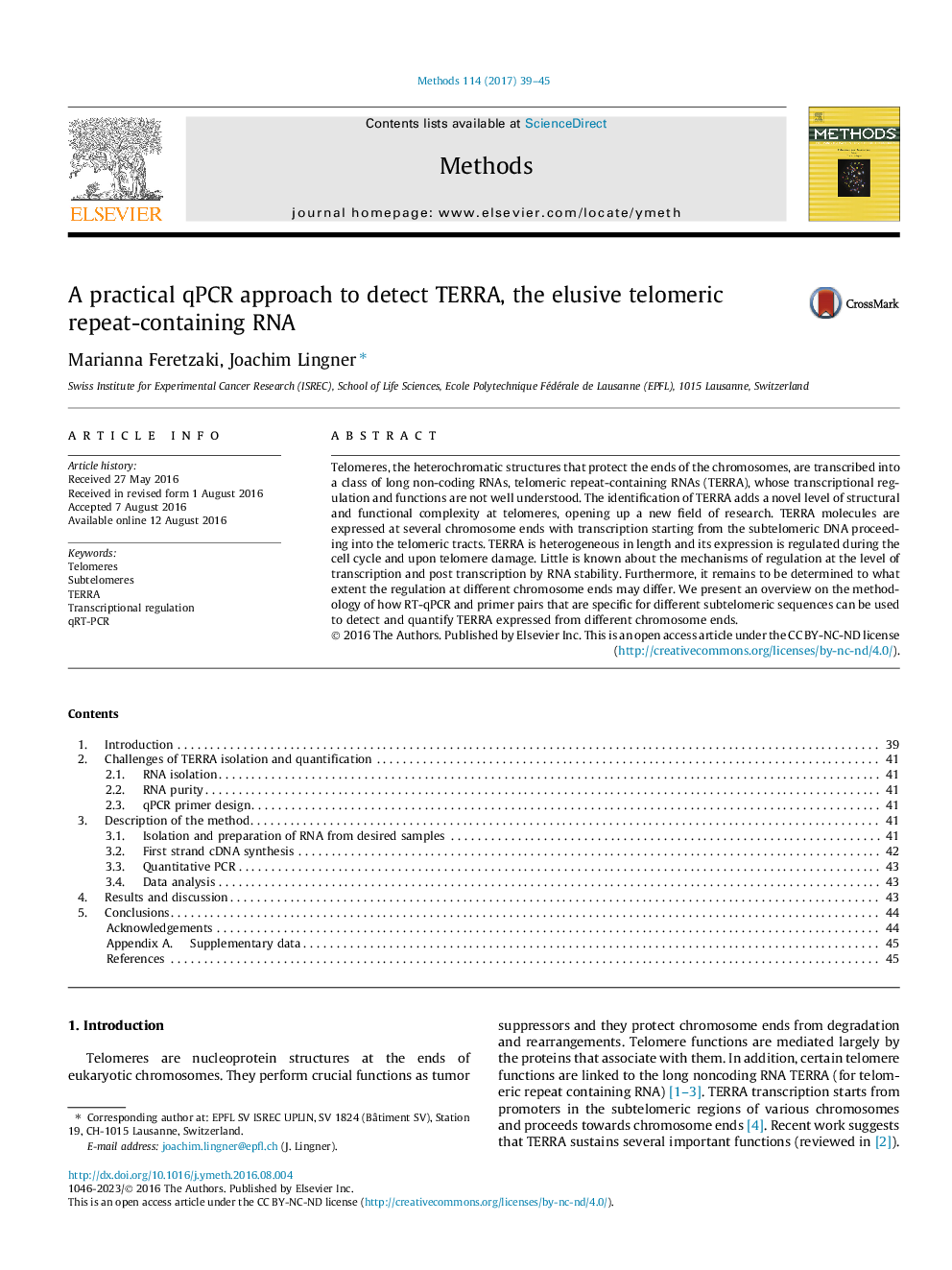| Article ID | Journal | Published Year | Pages | File Type |
|---|---|---|---|---|
| 5513448 | Methods | 2017 | 7 Pages |
â¢A method to quantify TERRA long noncoding RNA is described.â¢The chromosome end-specific RT-qPCR technique allows quantification of TERRA stemming from different chromosome ends.â¢The method allows studying regulation of TERRA in normal development and disease.
Telomeres, the heterochromatic structures that protect the ends of the chromosomes, are transcribed into a class of long non-coding RNAs, telomeric repeat-containing RNAs (TERRA), whose transcriptional regulation and functions are not well understood. The identification of TERRA adds a novel level of structural and functional complexity at telomeres, opening up a new field of research. TERRA molecules are expressed at several chromosome ends with transcription starting from the subtelomeric DNA proceeding into the telomeric tracts. TERRA is heterogeneous in length and its expression is regulated during the cell cycle and upon telomere damage. Little is known about the mechanisms of regulation at the level of transcription and post transcription by RNA stability. Furthermore, it remains to be determined to what extent the regulation at different chromosome ends may differ. We present an overview on the methodology of how RT-qPCR and primer pairs that are specific for different subtelomeric sequences can be used to detect and quantify TERRA expressed from different chromosome ends.
